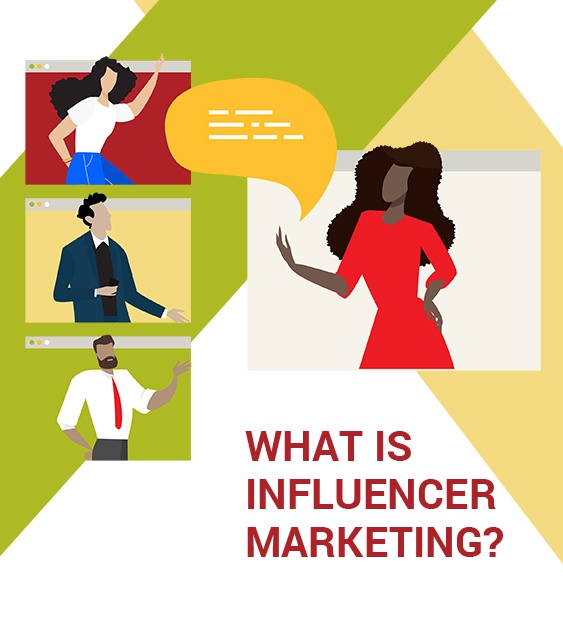People can break through the noise. People trust people. Influence is about relationships.
— Ty Heath, LinkedIn
There was a time, not too long ago, that the only people that were considered to have influence were celebrities. These include actors, musicians, producers, athletes, models, designers, and anyone involved in a very public occupation. Well, since the rise of social media platforms, everyday people slowly become influential figures. Their expertise in a particular subject was able to elevate them to new heights, where their knowledge and individuality made an impact on the lives of their particular audiences. Celebrities no longer have a monopoly on influence. Today, individuals across different platforms: Instagram, Twitter, Twitch, TikTok, and Youtube, all have a dedicated following that can have the power to have a positive impact on brand awareness for many organizations and businesses seeking to tap into new audiences. That is the power of influencers.
Therefore, marketing professionals have for some time now, are using the benefits of influencer marketing for brand awareness goals for their companies and/or clients. So, what exactly is influencer marketing? Well, influencer marketing is defined as follows: influencer marketing is a marketing strategy that uses the power of endorsements and product placements from individuals that have a dedicated social media following and are seen as experts within their respective fields, (i.e., influencers).
Different Types of Influencers
Because the world of influencers is so broad, they are typically separated based on the number of followers these individuals have. Below you will find the four major types of influencers and the benefits each of these may offer for your organization.
Nano Influencers:
These influencers have a following that falls anywhere between 1,000 to 10,000 followers. Nano influencers can be advantageous for your organization if you are a small to medium-sized business that is following a strict marketing budget. One of the best social platforms to find nano influencers is Instagram.
Micro-Influencers:
These influencers typically have a following that falls anywhere between 10,000 to 100,000 followers. These influencers tend to specialize in a particular niche. Their niche can be beauty, gaming, travel, technology, fitness, and practically any specialized interest. Also, micro-influencers produce high levels of engagement. Although these influencers have a larger following than nano influencers, they are still seen as approachable by most audiences.
Macro-Influencers:
With a following that falls between 100,000 to 1 million, macro-influencers developed such a formidable base through years of cultivating relationships. Macro influencers rose to prominence mostly through social media, podcasts, and blogs and are seen as leaders in their particular niche or field. Organizations can benefit from macro-influencers if they are searching to bring awareness for their brand’s products and services. Also, reaching macro-influencers is a good decision if your organization wants to reach large audiences.
Celebrity Influencers:
Their base can easily go over 1 million followers, and if you have a substantial marketing budget and want to reach as many people as possible, contacting celebrity influencers is the choice to make.
When to Use an Influencer?
Did you know that for every $1 spent, businesses are making $6.50? Also, when you consider that influencer marketing content delivers 11x times higher ROI than traditional forms of digital marketing, it’s no surprise that more and more organizations are utilizing influencers to bring brand awareness to their products/services. Deciding when to use an influencer to reach marketing goals for your campaign may seem like a daunting task. The good news is that influencer marketing is just like any other marketing strategy. For every marketing strategy you decide to pursue, there are certain actions that must take place in order for the strategy to work. Most marketing strategies follow a certain pattern to ensure maximum success. First, organizations must research. Discover which social media platform you will utilize, the demographics of your target, among many other key elements. Set a budget, decide on goals and messages, and refine your strategy whenever possible. By following these guidelines, you can make a wise decision on which type of influencer to reach to help you fulfill your company’s marketing goals.
Another factor to consider when deciding to choose an influencer is that organizations should carefully analyze their brand. What does your organization as a whole represent? What makes your brand distinct from others in your industry? Are you aware of the differences between marketing and branding? If not, there are ways to get informed. There is so much to learn about branding and it can be quite a difficult task to get acquainted with such a process. The great news is that there is no need to worry because your trusted marketing professionals at b.iD will help you along the way. There are tactics you can use to fully discover the purpose of your organization. Sometimes, it’s difficult to pinpoint why your organization is different from your competitors. That is where branding comes along. At b.iD branding is everything. Branding has specific elements that can ensure distinction and ultimately help you reach target audiences. By defining your brand, you can rest assured that producing an influencer marketing strategy will be the right decision to bring awareness that your organization needs to succeed.
Good News: Influencer Marketing isn’t Exclusive to Large Companies with Extensive Budgets
Influencer marketing can be particularly advantageous if your organization is searching for a creative way to fulfill marketing strategies surrounding brand awareness for your organization’s products and/or services. To ensure influencer marketing strategy success, contact the team at b.iD to assist you on the branding goals you have in mind for your business.
Copyright © 2014-2024 b.iD LLC. All Rights Reserved.
Boutique Creative Agency providing Branding Specialists, Logo, Copywriting, Print & Web Designs, Public Relations, and Marketing solutions in Houston, Texas










